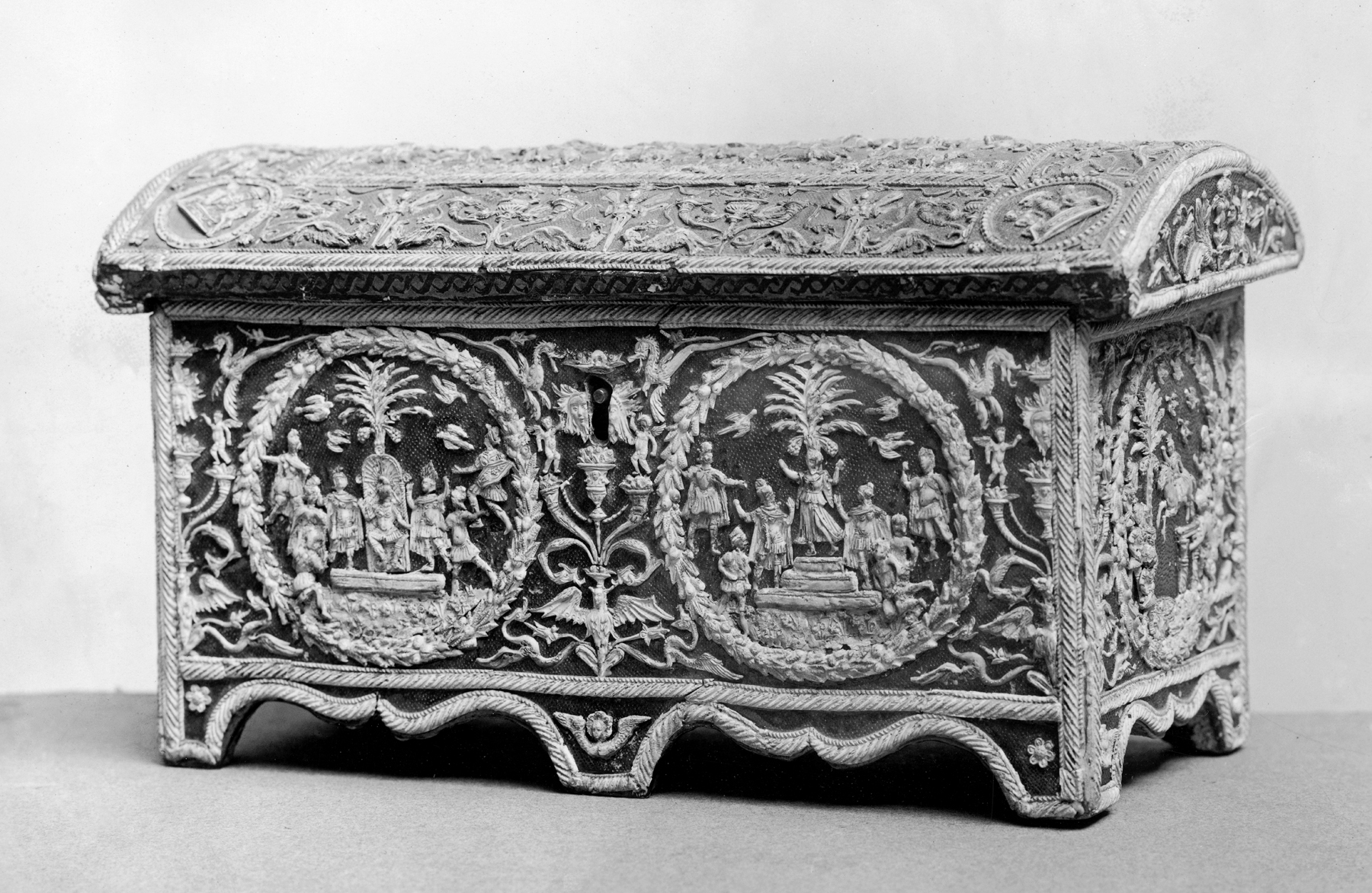Jewel Box
(Renaissance Europe )
This wooden casket has been finely decorated using the Italian style of carved and gilded "pastiglia" that was popular during the later 15th century. It involves creating a paste of lead powder and egg white that could be applied to the wood and then stamped, molded, and either left white or gilded. Such boxes were usually small and were often presented to women as gifts to be used for jewels or other small items. This one is decorated with scenes meant to suggest Roman reliefs, as the fantastical figures were much in vogue then due to the recent discovery of Roman wall paintings with such figures. A delicate casket like this could be passed down from mother to daughter as a precious inheritance.
Provenance
Provenance (from the French provenir, 'to come from/forth') is the chronology of the ownership, custody, or location of a historical object. Learn more about provenance at the Walters.
F. Ongania, Venice [date and mode of acquisition unknown]; Henry Walters, Baltimore [date and mode of acquisition unknown]; Walters Art Museum, 1931, by bequest.
Conservation
| Date | Description | Narrative |
|---|---|---|
| 9/12/1963 | Treatment | cleaned; repaired |
Geographies
Italy, Florence (Place of Origin)
Measurements
H: 6 × W: 10 11/16 × D: 5 1/2 in. (15.2 × 27.1 × 14 cm)
Credit Line
Acquired by Henry Walters
Location in Museum
Accession Number
In libraries, galleries, museums, and archives, an accession number is a unique identifier assigned to each object in the collection.
In libraries, galleries, museums, and archives, an accession number is a unique identifier assigned to each object in the collection.
65.14


